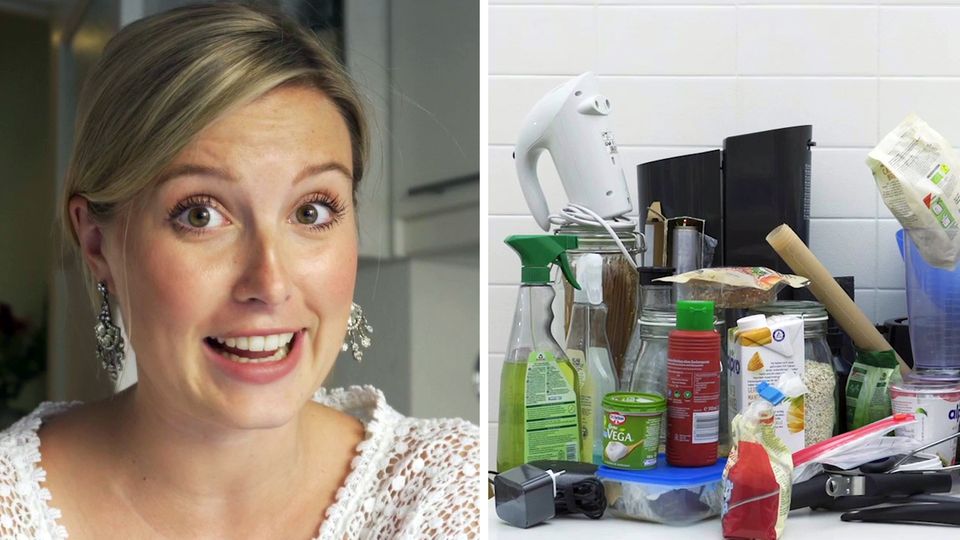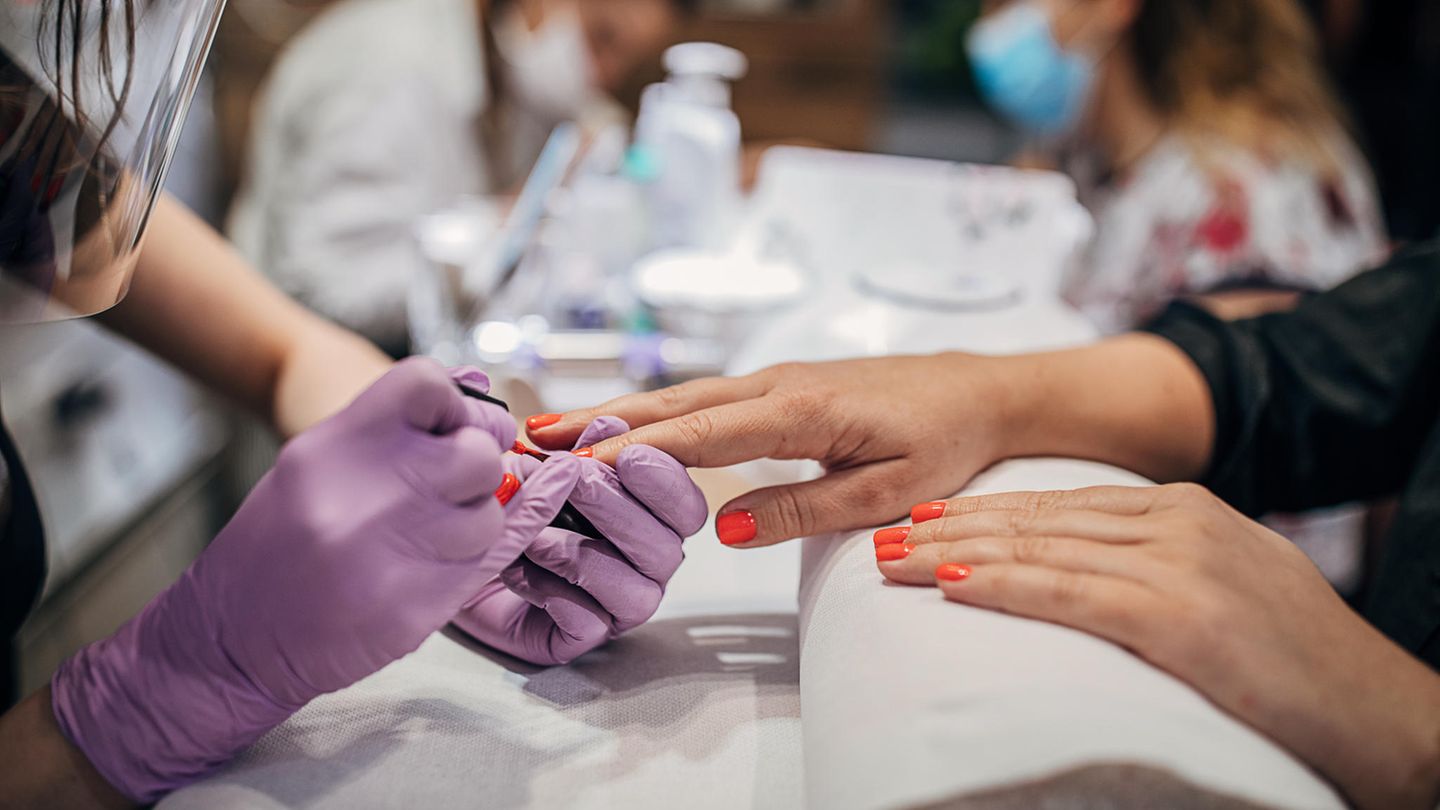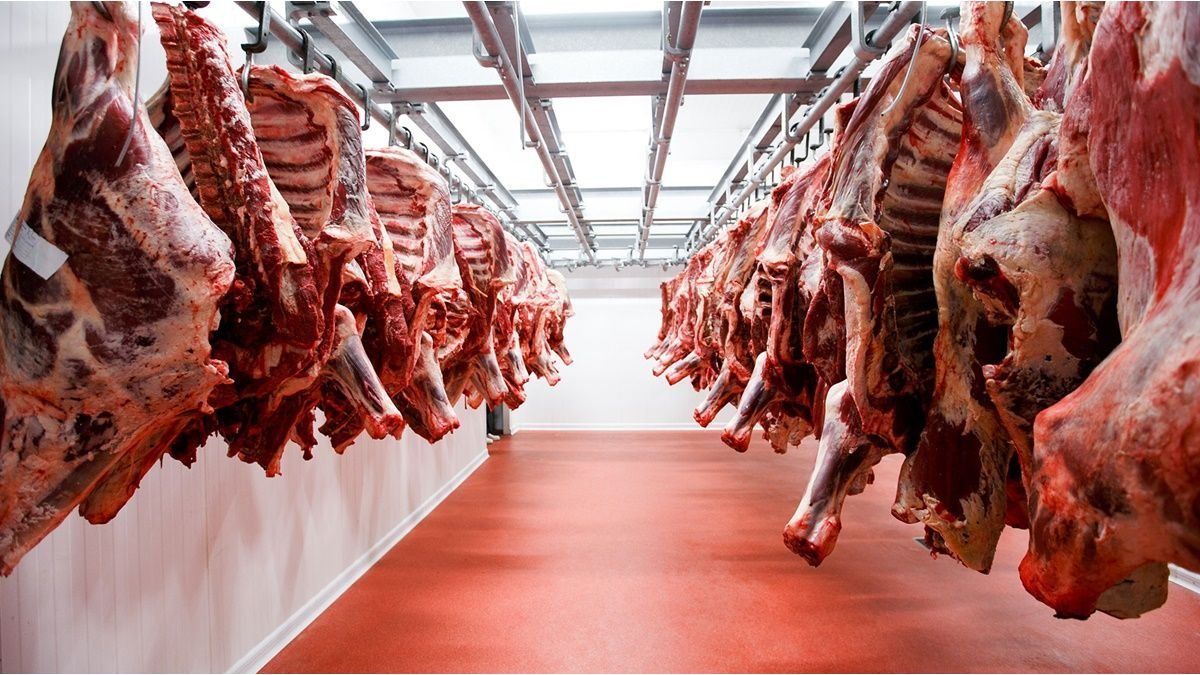Nail salons are very popular. Researchers have found dangerous substances in the chemicals used there – but the decisive factor is the amount.
It sounds worrying at first: Canadian scientists warn of an unexpectedly high exposure to certain chemicals in nail salons – people who work in salons are exposed to substances that are often used as plasticizers and flame retardants, according to the result of their study, which is published in the specialist journal “Environmental Science & Technology” has been published. In fact, the values determined in the investigation are good news, says a German expert: the chemicals were found in such small quantities that they are well below the applicable workplace limit values.
Nail salons are booming in many countries around the world, and there have also been a number of them in this country for years. The demand for professionally designed nails is accompanied by various, sometimes contradictory, analyzes of the health risks associated with working in such salons. A two-part series of articles in the “New York Times” 2015 for a riot that suggested a link between that job and miscarriages, cancer, thyroid disease and other health problems.
The use of UV-A lamps is also controversial
In contrast, in two studies, a US research group found neither significantly increased cancer rates among Californian nail salon employees nor a greater risk of pregnancy complications. In 2019, a model by researchers at the University of Colorado again revealed a potentially significantly increased risk of developing lung cancer, leukemia or other types of cancer after 20 years on the job.
The scientific view of the skin cancer risk that could emanate from the UV-A lamps used in the studios is similarly controversial, as summarized by the German Cancer Research Center (DKFZ) on its website.
Nail designers are exposed to plasticizers
Scientists from the University of Toronto have now looked into exposure to certain chemicals in Canadian nail salons. Specifically, they examined the indoor air in 18 discount nail salons by having nail designers wear both active air sample collectors and passive sensors in the form of special silicone bracelets and brooches.
On the one hand, they found that the women were exposed to several phthalate plasticizers – which was to be expected given their use in personal care products. In addition, however, so-called organophosphoric acid esters (OPEs) were also found, which can be harmful to health.
Substances harmful to health detected at low levels
The specific source of these substances in nail salons was not determined in the study, but the authors point out that such OPEs are added as flame retardants in building materials, certain insulations, and seat and bed linen. In the nail salons, seating furniture containing foam, hand rests, sandals and toe separators could also be possible sources.
The authors may be concerned about their investigation “since exposure to some phthalates and OPEs and their metabolites has been associated with an increased risk of papillary thyroid cancer in adults, a higher risk of endometriosis, an increase in uterine volume, reduced female fertility, and a reduction in male semen quality”as it says at the end of the study – a warning that does not derive from the analysis values for Thomas Gebel, Group Manager Toxicology at the Federal Institute for Occupational Safety and Health (BAuA): The values determined are so low that they are actually good trade message.

“No unacceptable risk”
Gebel explains his classification using the plasticizer diisobutyl phthalate (DIBP), the average value of which in nail salons was 337 nanograms per cubic meter. “This value is about a thousand times lower than the limit value for the related substance dibutyl phthalate in Germany, namely 580 micrograms per cubic meter.” The workplace limit value is defined as a health-based limit value. “This means that if healthy workers exhaust this limit at work for more than eight hours every day for their entire working life, they generally do not suffer from any illness.”
In the case of the flame retardant inhibitors mentioned in the study, the values were in some cases even 10,000 times lower than what is usual as the occupational exposure limit for this group of substances. “Even if the substances have very critical properties that are hazardous to health, such as carcinogenic effects, the levels are so low that there is no unacceptable risk”summarizes Gebel.
Source: Stern




